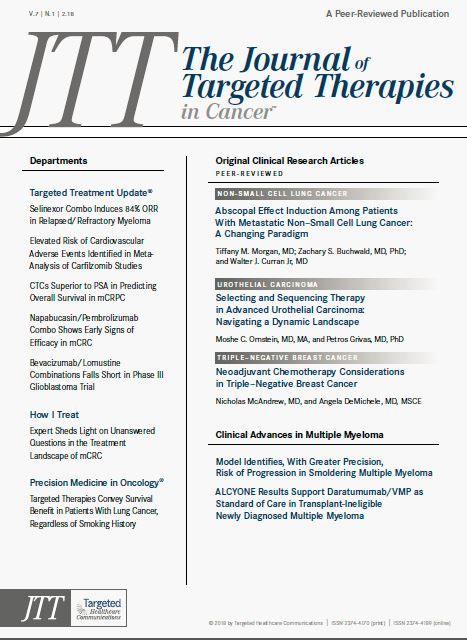Model Identifies Risk of Progression in Smoldering Multiple Myeloma With Greater Precision
Using next-generation squencing methods, researchers are attempting to combine clinical and genomic biomarkers to identify patients with smoldering multiple myeloma who are at high risk for disease progression.
Mark Bustoros, MD
Using next-generation sequencing methods, researchers are attempting to combine clinical and genomic biomarkers to identify patients with smoldering multiple myeloma (SMM) who are at high risk for disease progression. The findings demonstrate that performing next-generation sequencing (whole exome sequencing, targeted sequencing, and ultra-low-pass whole genome sequencing) in patients with SMM can identify genomic alterations associated with high-risk SMM (HRSMM) and low-risk SMM (LRSMM) through parameters such as mutation load, somatic mutations, and somatic copy number alterations.
“We currently have prognostic models that are based on clinical biomarkers. They have certain advantages but also have limitations,” said Mark Bustoros, MD, a postdoctoral fellow at Dana-Farber Cancer Institute and Harvard Medical School in Boston, Massachusetts. “We aim that the model we are developing would address these limitations and could precisely predict SMM patients who will progress within specific time periods like two, five and ten years,” he continued. Results of the study were presented at the 59th American Society of Hematology (ASH) Annual Meeting & Exposition in Atlanta in December. The use of a clinical biomarker with a genomic biomarker may help stratify patients with SMM better.
Identifying the patients who might progress is beneficial because it helps clinicians understand how the disease advances and how it unfolds when moving from an asymptomatic to a symptomatic stage. “If we can accurately identify those patients with a high risk of progression, we could offer them earlier treatment,” Bustoros said.
The researchers, led by Dana-Farber’s Irene Ghobrial, MD, have analyzed gene samples of 186 patients with SMM, performing whole exome sequencing (n = 70) and targeted deep sequencing (n = 116) of progressor and nonprogressor SMM, respectively. They also conducted ultra-low-pass whole genome sequencing on 116 samples, and cellfree DNA (cfDNA) testing on 20 samples.
Bustoros and colleagues found that, in addition to MYC gene aberrations, many of the mutations were among genes in the MAPK and NF-kB pathways. These genes are known to be altered in MM. Patients who harbored these mutations had a higher risk of progression to the symptomatic disease.
The study results showed that the fractions of tumor DNA in the blood were higher in the HRSMM patients than in the LRSMM patients (P= .03). The same group at Dana-Farber led by Ghobrial has worked on using this next-generation sequencing in newly diagnosed and relapsed myeloma patients. They hope their findings will lead to the development of new ways to apply cfDNA sequencing to monitoring patients with the myeloma precursor conditions monoclonal gammopathy of undetermined significance and SMM, which have less tumor burden.
Higher mutation load (average 1.44 mutations/Mb) was observed in patients with HRSMM, which is close to the average of 1.6 mutations/Mb in symptomatic MM, compared with patients with LRSMM (average 0.73 mutations/Mb;P= .001). Mutations in MAPK pathway genes (KRAS, NRAS, BRAF) were detected in 21.7% of patients with HRSMM versus 0% in those with LRSMM (P= .004).
For patients who did not have MYC aberrations, the median time to progression (TTP) was 44 months, compared with a median TTP of 12 months for those patients who exhibited the aberration.
On the other hand, the median TTP in patients who had mutations in MAPK pathway was 22 months, compared with 46 months in those who did not have these mutations.
“Patients who have smoldering multiple myeloma with these alterations are at higher risk for progression than patients who do not acquire these alterations,” said Bustoros.
Samples for the research came from Dana-Farber’s Center for Prevention of Progression of Blood Cancers, which has gathered tissue and blood samples from more than 1000 patients with precursor conditions to various blood cancers.
The researchers now are sequencing dozens of additional patient samples, many of them from cancer centers around the country and the globe, and they are seeking samples that span different points in time along myeloma progression.

Survivorship Care Promotes Evidence-Based Approaches for Quality of Life and Beyond
March 21st 2025Frank J. Penedo, PhD, explains the challenges of survivorship care for patients with cancer and how he implements programs to support patients’ emotional, physical, and practical needs.
Read More